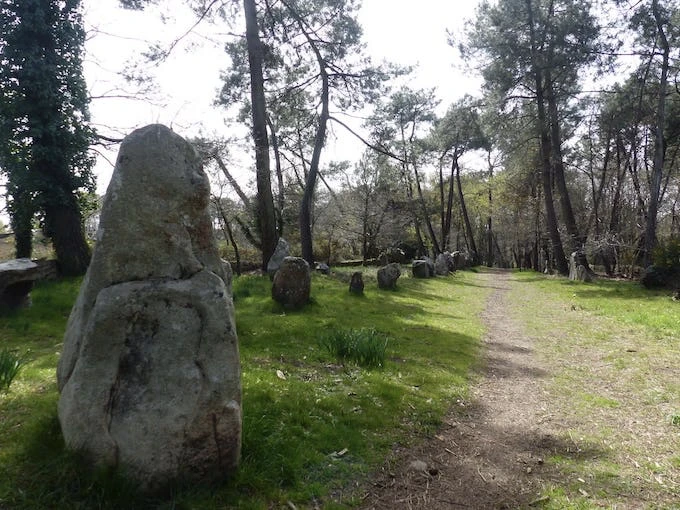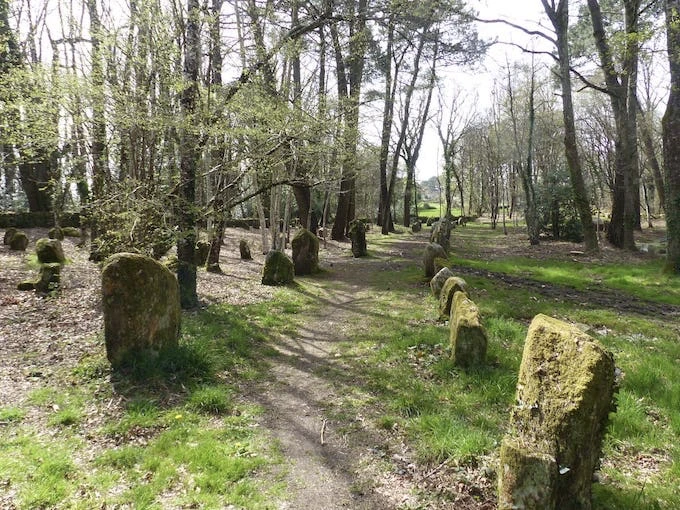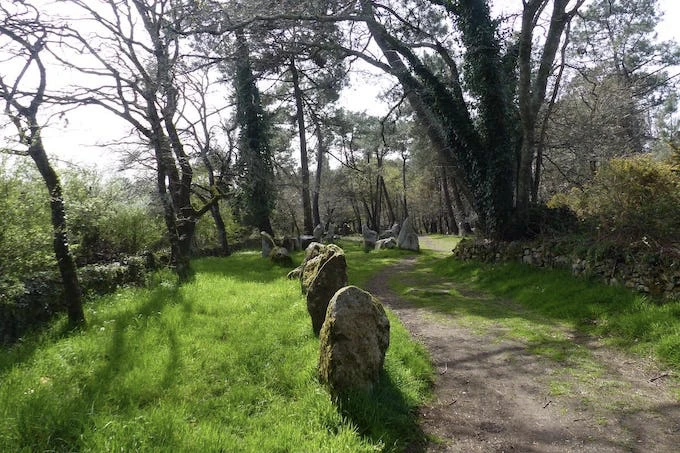The Carnac Alignments (Carnac Stones)

The Alignments of Ménec
The site of The Alignments of Ménec is the most emblematic site in Carnac. You will find the Megaliths House dedicated to the Carnac alignments.
The Ménec site spans a little over 1 km and consists of 1,050 menhirs (stones) spread across 11 parallel rows. The site is also marked by the presence of two cromlechs (circles of menhirs) arranged at each end.
The Alignments of Ménec constitute the most representative site of the alignments due to their ordered structure. It is also the site that has been most studied by archaeologists to understand and interpret, or at least attempt to, the origin and reason behind the Carnac alignments.
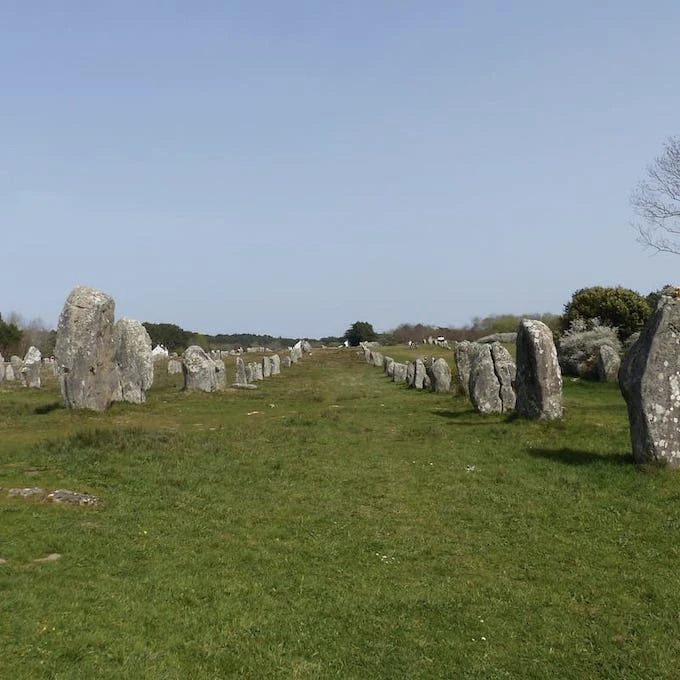
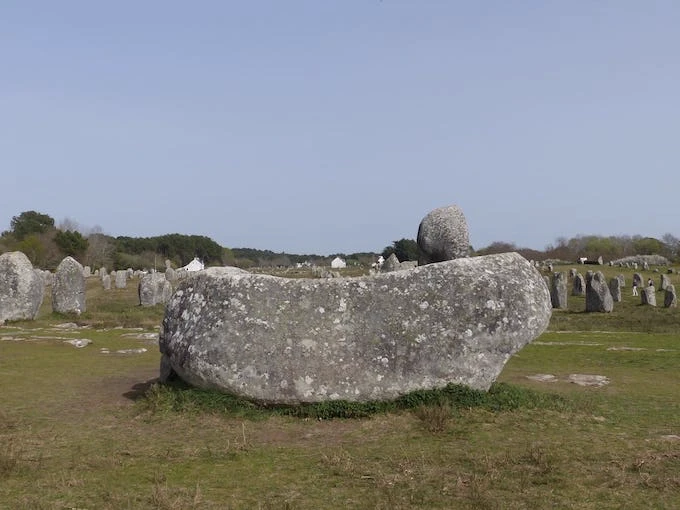
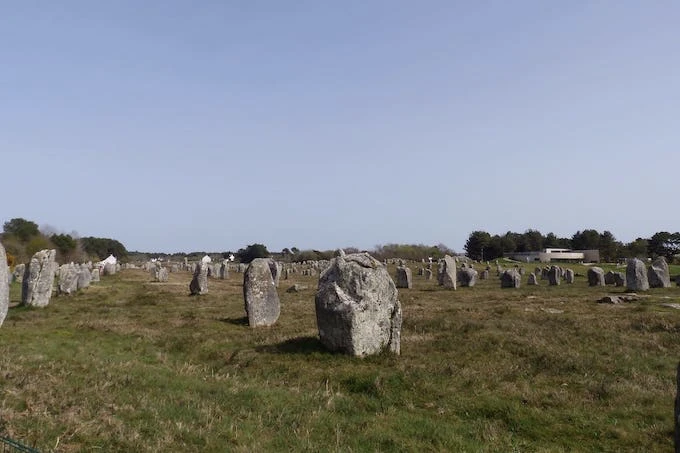
The Toul-Chignan Alignments
The site of The Toul-Chignan Alignments is the smallest alignment park in Carnac. It’s impossible to miss for all visitors passing through the seaside town, as it’s located at the entrance of Carnac.
Toul-Chignan features around a hundred menhirs and a cromlech. Due to the marshy ground, it’s not possible to enter among the menhirs. However, it’s possible to observe the alignments from the road on the way to Kermario.
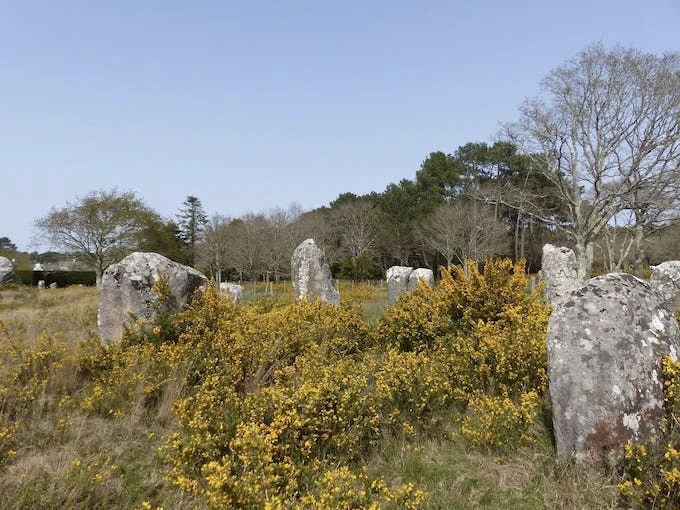
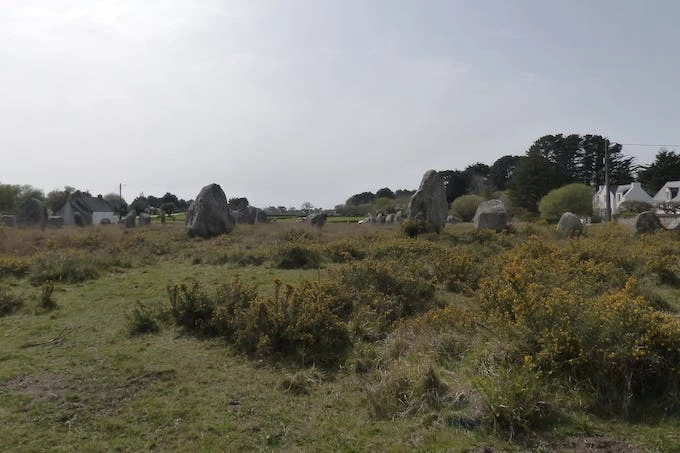
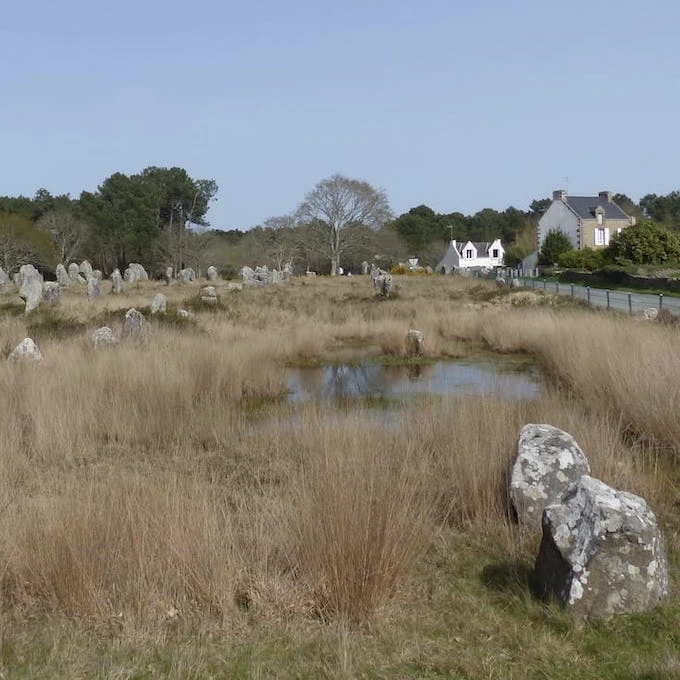
The Kermario Alignments
The site of The Kermario Alignments is the most visited and popular site among the Carnac alignments. It extends from the famous Kermario Dolmen to the artificial pond of Kerloquet. The site comprises 1029 stones arranged in 10 rows, but most importantly, it’s the site that features the largest menhirs, made of granite and weighing several tons each.
The Kermario Dolmen marks the beginning of the Kermario site. The Kermario Dolmen is a small covered alley that housed a funerary burial. It was likely covered by a cairn (karn) in the past. It’s one of the main dolmens of Carnac.
The Kermario Alignments site is divided in two and separated by a mill, the Kermaux Mill. The mill has been refurbished as an observation tower and offers an ideal high point to observe the Kermario site. It also provides a distant view of the Saint-Michel Tumulus, overlooking the town of Carnac.
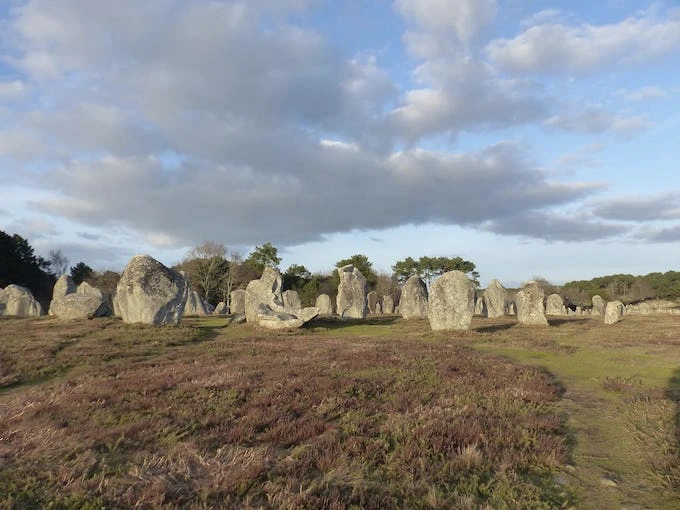

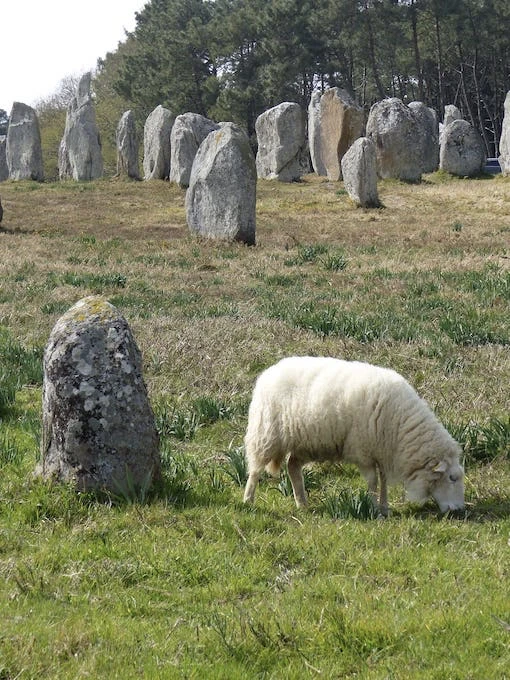
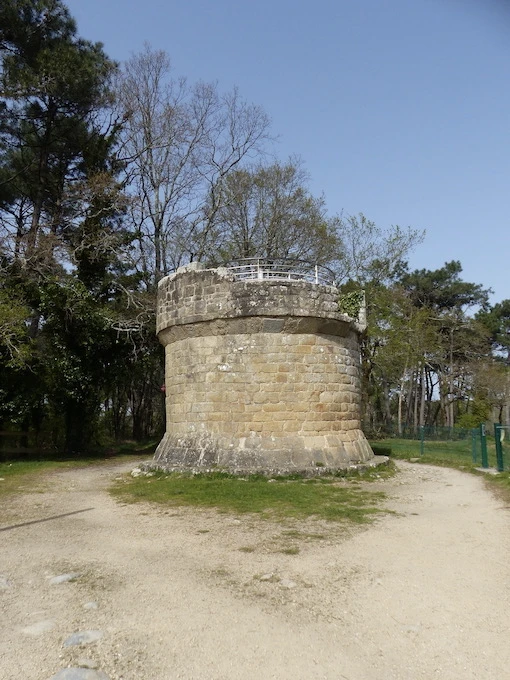
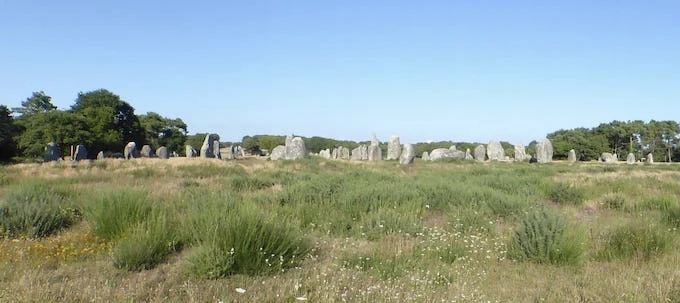
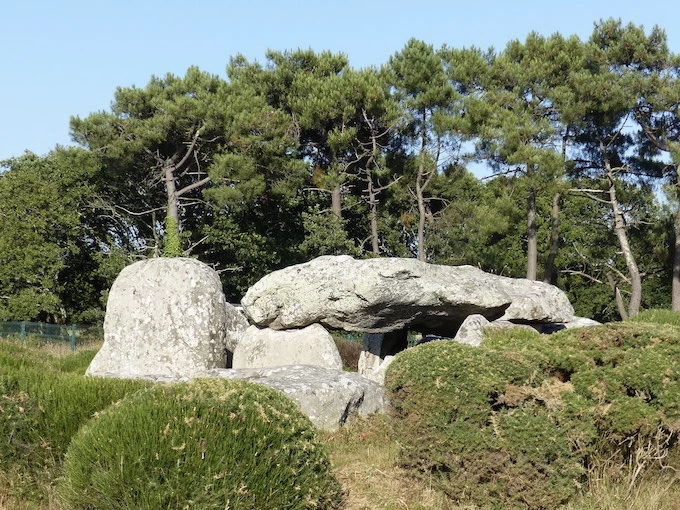
The Manio Alignments
The Manio Alignments are a small site located to the east of the Kerloquet pond. The few remaining menhirs are remnants, as a part of the Neolithic site was destroyed during the creation of the pond.
Parallel to the menhir park, the village of Manio has two points of interest hidden in the forest: the Giant of Manio and the Manio Quadrilateral. Both are situated in the forest about 200 meters from the Manio Alignments.
The Giant of Manio is an essential stop during any visit to Carnac and the alignments. Standing at 6.45 meters, it’s the tallest stone in Carnac! It also ranks among the 20 tallest menhirs in Brittany.
Right across from the tallest menhir in Carnac stands the remains of the Manio Quadrilateral, a relic of prehistory and its ancestral customs. It was restored in the early 20th century and consists of about forty monoliths less than a meter tall, forming a rectangle. The site likely was a mound (an artificial hill) that might have housed an individual tomb or a collective pit.
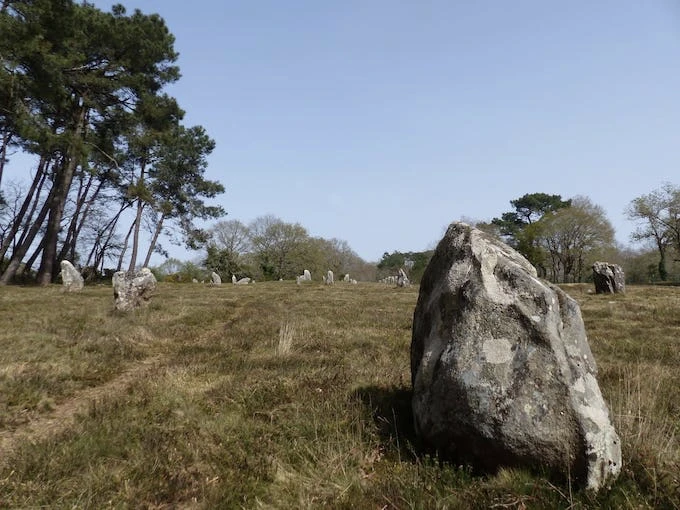

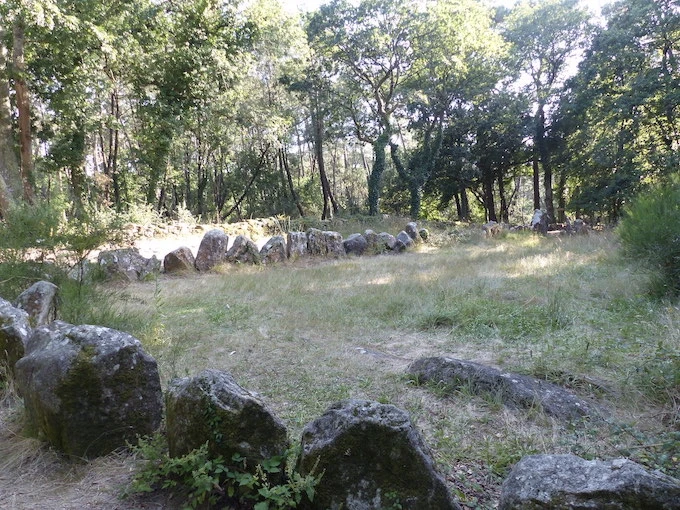
The Kerlescan Alignments
The site of the Kerlescan Alignments is a small site located at the edge of the neighboring town, La Trinité-sur-Mer. It consists of 555 menhirs spread across 13 rows. The Kerlescan site ends with a small Cromlech made up of 39 menhirs.
At the northern end of the Kerlescan Alignments, in the midst of an equestrian park, stands a Dolmen, the Kerlescan Dolmen. The Dolmen has been restored after stone thefts, but it remains damaged and poorly maintained.
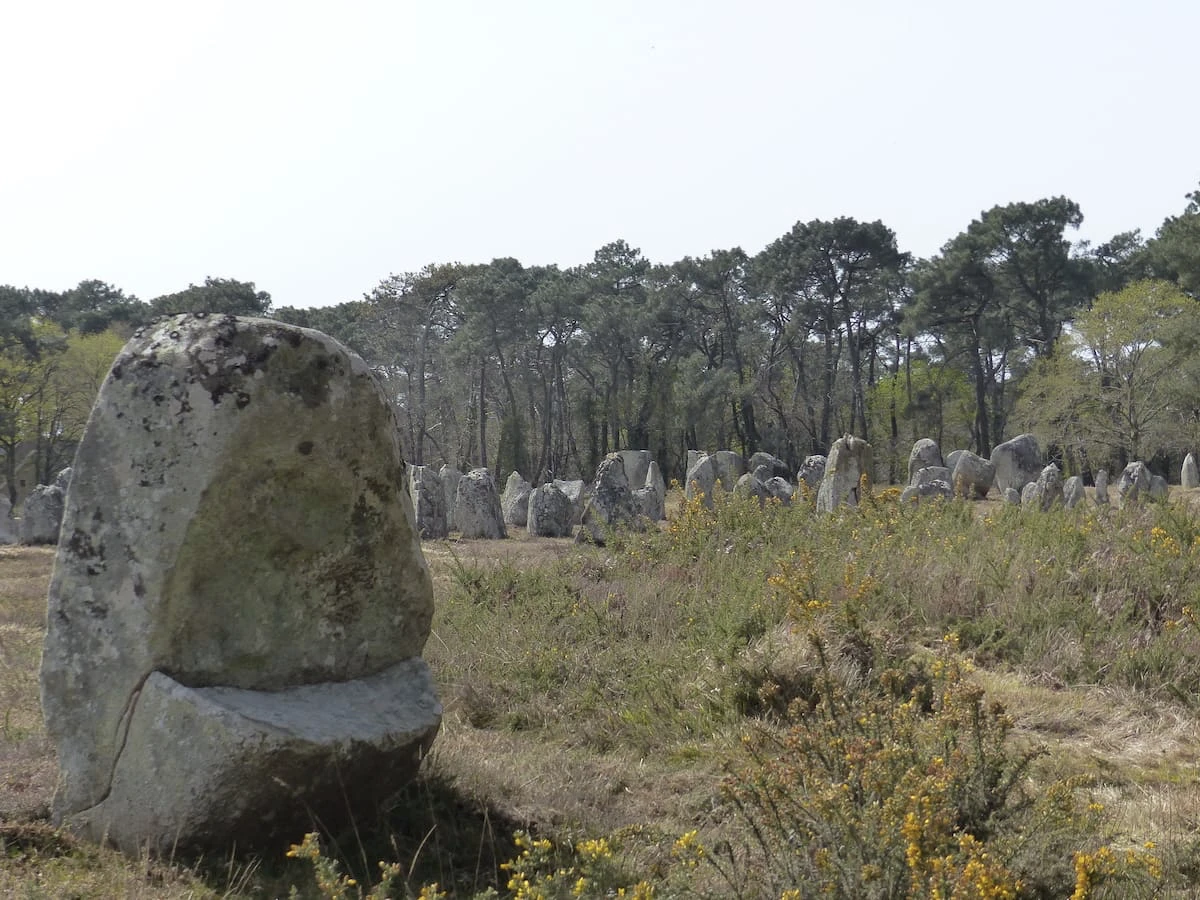
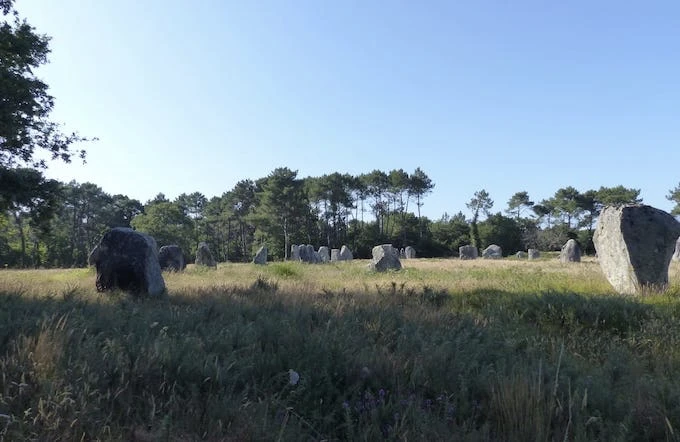
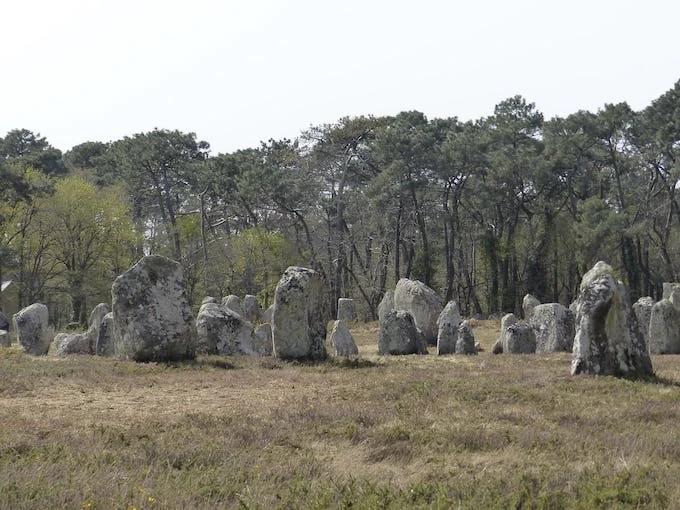
The Alignments of Petit Ménec
The Alignments of Petit Ménec, although typically associated with visiting the Carnac alignments, are actually located in the neighboring municipality, La Trinité-Sur-Mer.
The Petit Ménec site is slightly offset from the Kerlescan site; it’s located about 1 km away and requires crossing a departmental road. A site that is often forgotten by explorers of menhirs and dolmens, but one that is worth a visit. Sheltered on the edge of the forest, Petit Ménec is composed of around a hundred menhirs arranged in 8 rows, creating a bucolic and charming atmosphere.
